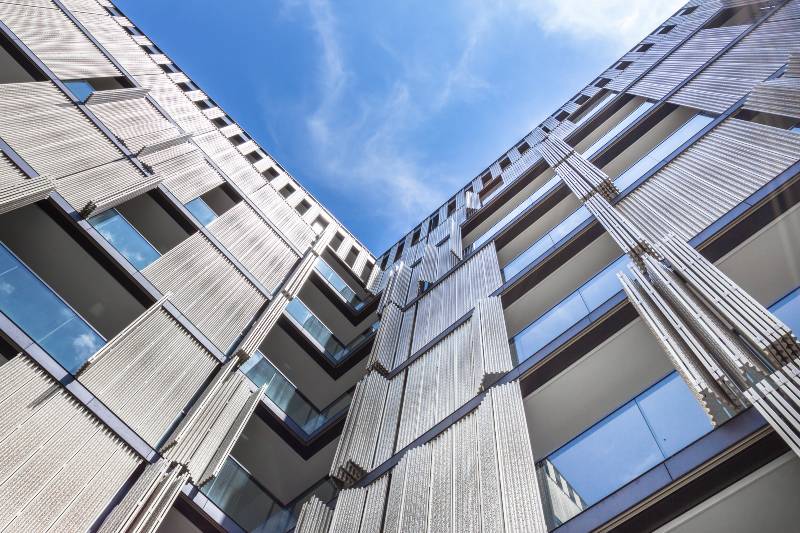Rent control is a contentious topic, and the debate surrounding it becomes even more complex when it comes to mixed-use properties. As cities become denser and resources get stretched thinner, successful urban planning must consider how best to allocate space among different kinds of tenants – and rent control can be one tool to ensure that residents have access to well-maintained living spaces in places where demand otherwise could outstrip supply.
It’s not an easy decision, as both tenants and landlords need assurance that they will benefit from independent investment decisions. But starting with a concrete understanding of what rent control means for mixed-used properties provides an important foundation for discussing solutions that move us away from the zero-sum mentality we often find ourselves in today.
Rent control on mixed-use properties involves regulating rental rates for residential units within buildings that also house commercial spaces. This policy aims to maintain affordable housing in areas with commercial activity. However, critics argue it may deter property investment and maintenance. The impact on commercial rents varies by jurisdiction and specific regulations.
Key Takeaways
- Rent control in mixed-use properties as well as a rent controlled apartment offers both stabilization of rental markets and potential for urban revitalization, but it’s not without its challenges.
- Balancing the dynamics between a commercial rent control in mixed-use settings requires careful consideration to ensure equitable outcomes.
- While there are clear benefits for commercial tenants, policymakers must also consider the economic implications for landlords and the broader property market.

Historical Context: Rent Control on Mixed-Use Properties
Evolution of Rent Control Policies
Rent control policies have been in existence for over a century, starting as early as the late 19th century as a means to protect commercial tenants from significant rent increases and gentrification during war times. Such policies have evolved over the years, adapting to different socio-economic contexts, and have become more prevalent in urban settings, particularly in cities facing a housing shortage or experiencing substantial growth.
In the mid-20th century, rent control policies became more focused on rent stabilization, with the intent of providing affordable housing options for low-income residents and those in vulnerable socioeconomic situations. Over time, these policies were relaxed or eliminated in some places, while in others, they were reinforced to address growing housing concerns in densely populated urban centers.
Today, the debate on rent control policies is still ongoing, with several arguments for and against their effectiveness. While proponents emphasize the need for rent control as a way to create affordable housing and prevent displacement, critics point out that these policies often lead to market distortions that discourage new residential construction and diminish the overall quality of the housing stock.
The Rise of Mixed-Use Properties in Urban Settings
Mixed-use properties, which combine residential, commercial, and occasionally industrial spaces within a single building or complex, have recently gained much favor in urban settings. This rise in popularity is largely driven by a growing preference for more efficient and sustainable land use and a response to the increasing demand for housing in densely populated areas.
Urban planners and architects are embracing mixed-use developments as a way to foster walkable and vibrant neighborhoods that focus on accessibility to amenities, public transportation, and local job opportunities. They have the potential to reduce greenhouse gas emissions, promote economic growth, and create synergies between various land uses, thus benefiting the people who live in and around these spaces.
The rise of mixed-use properties has sparked an engaging debate regarding the application of rent control policies for mixed-use developments. The complexity of these properties presents unique challenges for lawmakers when considering rent control, such as determining tenant eligibility and the proportion of spaces that should be subjected to rent stabilization or control measures.
The historical context of rent control and the rise of mixed-use properties illustrate the dynamic interplay between urban development and housing policy. As cities continue to evolve and grow, the challenge of offering equitable and affordable housing remains a critical issue, warranting careful consideration from both policymakers and stakeholders about rent control on mixed-use properties.
Opportunities of Rent Control on Mixed-Use Properties
Stabilizing Rental Markets and Preventing Rapid Price Increases
Rent control policies on mixed-use properties can be a powerful tool for stabilizing rental markets and preventing rapid price increases. By capping the amount by which landlords can raise rents, these policies can help maintain affordability for tenants and mitigate the impact of housing crises, particularly in booming urban markets.
Encouraging Urban Development and Revitalization
In the context of mixed-use properties, rent control can encourage urban development and revitalization. These developments are increasingly viewed as a transformative strategy for cities, offering a blend of residential, commercial, and sometimes industrial spaces that enhance the functionality and livability of urban areas.
This kind of diversity in property usage can boost local economies, allowing for a more efficient use of land and resources. Moreover, by promoting diversity and density, mixed-use developments with rent-controlled residential units can bolster a city’s vitality and vibrancy, encouraging more people and businesses to consider city living.
Attracting Diverse Tenants and Businesses
Lastly, rent control on mixed-use properties may help in attracting a diverse mix of tenants and businesses. By maintaining affordable rental rates, a wider range of individuals and businesses—especially those that could be priced out of unrestricted rental markets—may be able to take up residence or open businesses in these developments. This ensures a healthy mix of residents from different socioeconomic backgrounds and diverse businesses in an area, enriching the community and fostering economic inclusivity.
While rent control on mixed-use properties carries potential challenges, it also presents unique opportunities to stabilize rental markets, encourage urban development and revitalization, and attract diverse tenants and businesses.
It’s crucial that policies are well-designed and implemented in a balanced manner that accounts for all stakeholders, including renters, landlords, and the wider community. The complex interplay of factors at work necessitates a nuanced understanding of the context, and careful consideration of both the opportunities and the potential unintended consequences.
Challenges of Rent Control on Mixed-Use Properties
One of the main challenges of implementing rent control policies in mixed-use properties can be the potential disincentive for property owners to invest in development or maintenance. When rental income is artificially capped, landlords may not have the financial motivation to maintain or improve their properties, which can lead to the deterioration of the housing stock over time. Furthermore, developers might be discouraged from constructing new units if they feel that the potential return on investment would be too low under rent control regulations. This could exacerbate housing shortages in certain urban centers.
Economic Implications for Landlords
The economic implications for landlords represent another significant challenge. Rent control policies often lead to reduced income for property owners, which can make it challenging to cover costs associated with property ownership, management, and maintenance. There’s also the financial risk that the commercial sector of the mixed-use property might not generate enough revenue to offset potential losses from the residential sector due to rent control measures.
Balancing Commercial and Residential Rent Control Dynamics
Finally, balancing the dynamics between commercial and residential rent control within mixed-use properties can be a complex task. Commercial and residential rentals differ significantly in terms of lease lengths, pricing dynamics, tenant rights, and regulation. As such, it’s often challenging to craft legislation that adequately addresses these differences while ensuring fairness for all parties involved. Policymakers and stakeholders must carefully consider these dynamics to create balanced, effective rent control policies.
While rent control on mixed-use properties can offer opportunities to address housing affordability issues, it also poses significant challenges. Policymakers must carefully balance the various diverse and often competing interests involved, all while working to promote an equitable, inclusive and vibrant urban environment.
Make sure to read an article I wrote about rent control limits. It provides comprehensive insights and analysis to help you better understand the complexities surrounding this crucial issue. Expanding your knowledge on rent control will equip you with the information to make informed decisions and participate effectively in relevant discussions!

Rent Control on Mixed-Use Properties FAQs
How does rent control work in USA?
Read an article I wrote where about rent control, to make you understand it more properly
Is there rent control in US?
According to Wikipedia, only two states, Oregon and California, have implemented statewide rent control laws. Additionally, there are six states, namely California, New York, New Jersey, Maine, Maryland, and Minnesota, where specific localities have implemented some form of residential rent control.
Who is exempt from California rent control?
Please note that certain properties are not subject to California rent control laws. These property types encompass condos and single-family homes not owned by a real estate investment trust (REIT), corporation, or corporation-owned LLC, as well as mobile homes.
How much can landlords raise rent in states without rent control?
In the United States, landlords have the freedom to determine rental prices without any federal restrictions on annual rent increases. Typically, landlords can raise rents by any desired amount as long as they provide adequate notice to their tenants, usually 30 days in advance.
What is the objective of rent control in major US cities?
Rent-control laws typically encompass two interrelated objectives: preserving affordable housing and mitigating the negative effects of abrupt rent hikes. Over time, these laws have evolved to include provisions that strike a balance between safeguarding landlords’ ability to adequately maintain their properties and ensuring they earn a fair return on their investment.
Conclusion
The impact of rent control in mixed-use properties is multi-faceted, and navigating the balance between cost stabilization and potential economic benefits can be difficult. Given the unique dynamics of different markets, it’s important to consider all potential outcomes before implementing any policy changes. While cities and renters may gain from targeted rent controls, those favoring property owners will likely suffer.
Seeking professional advice from real estate experts can help you make the best decision for your particular situation. If you are considering any kind of rental or property regulations in your city, I urge you to call or schedule a free consultation with me for a comprehensive view of your options.




